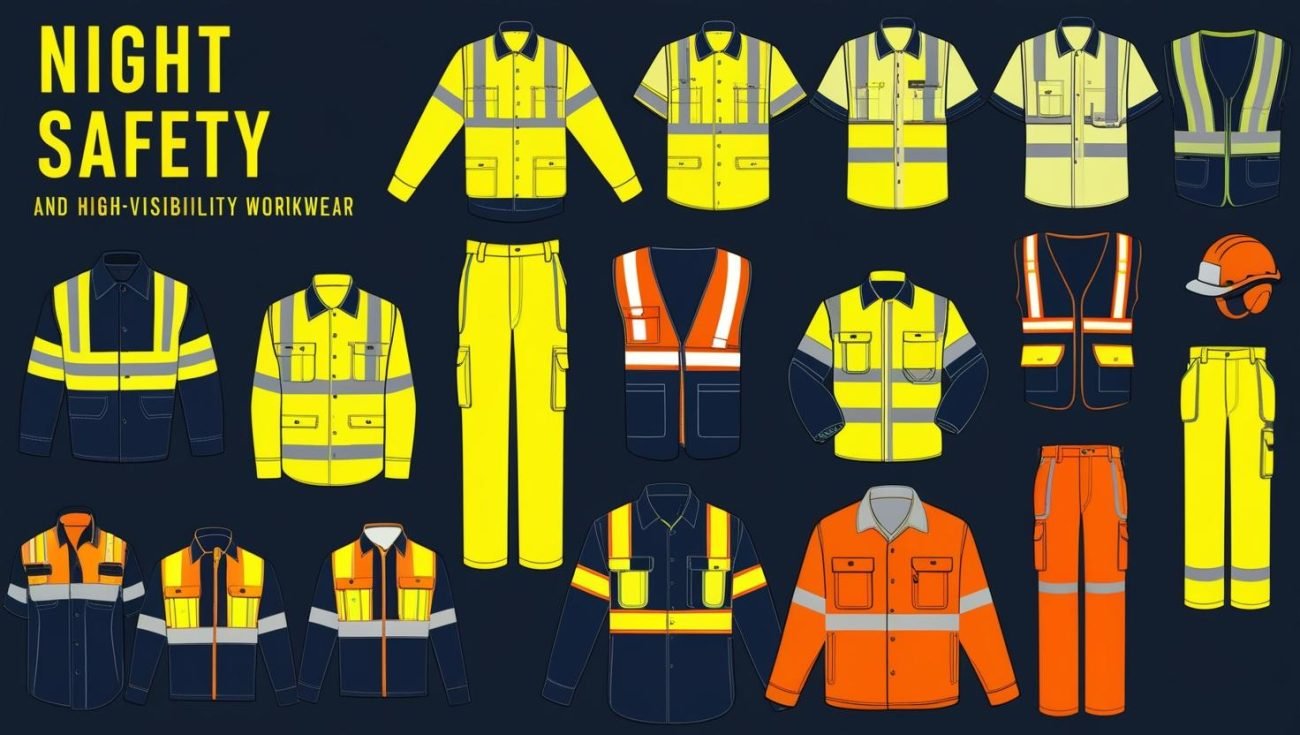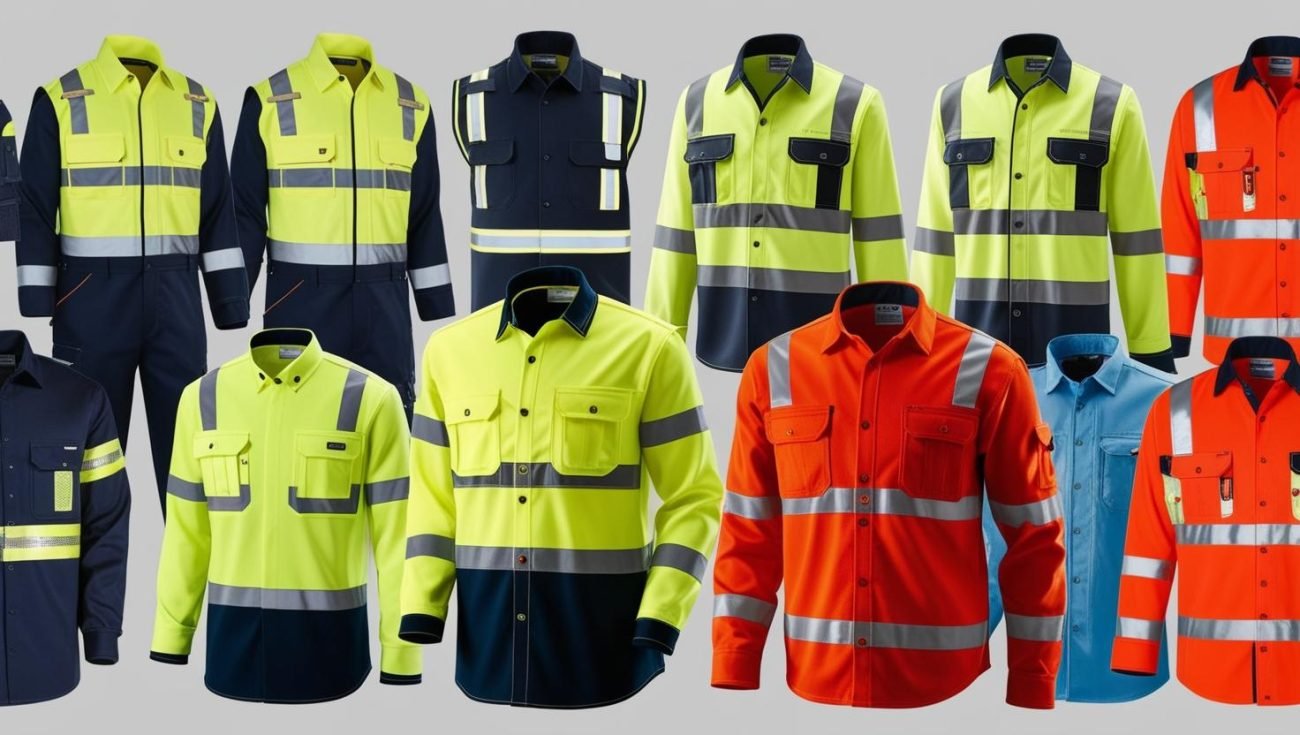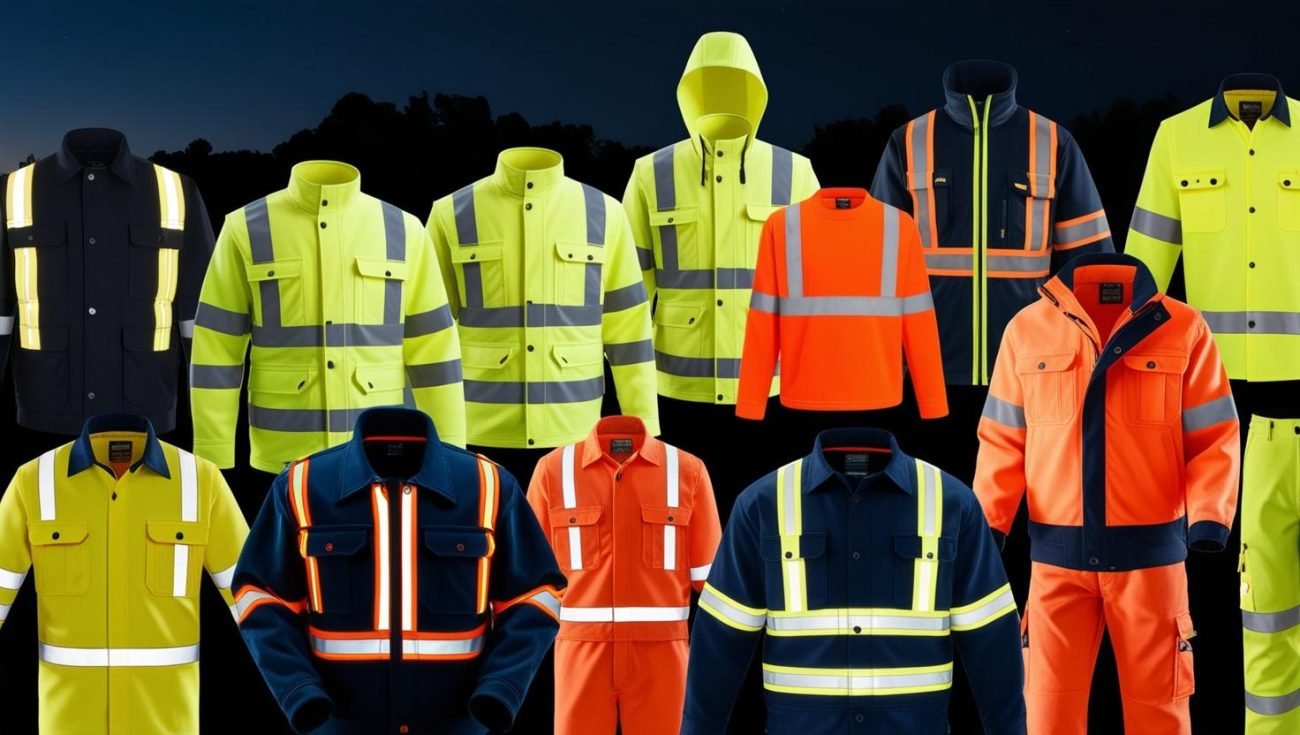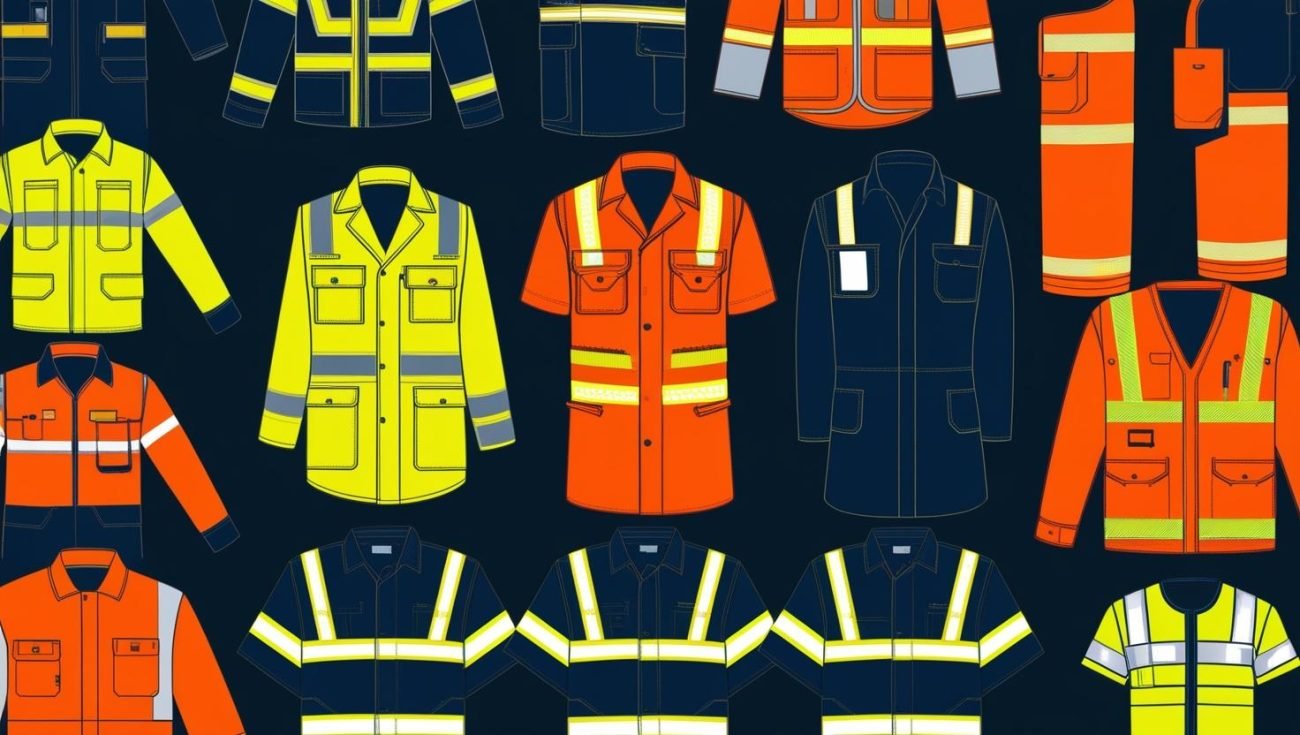Enhancing Low-Light Worker Protection: Key Trends in Night Safety Clothing and High-Visibility Workwear Clothing for May 2025
 As technology advances, worker safety remains an evergreen priority, particularly for professionals operating in low-light and night environments. Night safety clothing and high-visibility workwear have evolved from basic reflective gear to advanced solutions incorporating innovative designs, cutting-edge fabrics, and tech integrations aimed at enhancing worker protection.
As technology advances, worker safety remains an evergreen priority, particularly for professionals operating in low-light and night environments. Night safety clothing and high-visibility workwear have evolved from basic reflective gear to advanced solutions incorporating innovative designs, cutting-edge fabrics, and tech integrations aimed at enhancing worker protection.
Why Night Safety Clothing Matter
Night safety clothing primarily serves workers exposed to risks during low-light conditions, such as construction crews, maintenance workers, roadside laborers, and emergency responders. It enhances visibility by using reflective materials, bright colors, and modern illumination technologies, thereby preventing accidents caused by reduced visibility.
According to global workplace safety statistics, over 40% of accidents in industries requiring outdoor labor occur during dusk or nighttime due to insufficient visibility. High-visibility workwear clothing plays a pivotal role in reducing this percentage by ensuring workers are easily recognizable regardless of lighting conditions.
Key Trends in Night Safety and High-Visibility Workwear Clothing for May 2025
Integration of LED Bands for Enhanced Visibility
Traditional reflective gear is making way for clothing equipped with LED lights, glow bands, and fiber optics. These active illumination features ensure visibility at greater distances compared to passive reflection methods, making workers highly noticeable even in pitch-dark environments or during adverse weather conditions.
LED-integrated safety clothing comes with rechargeable power sources, often lasting up to 8 hours per charge. Some workwear brands feature programmable LEDs, allowing color adjustments to denote specific worker roles in busy environments.
Smart Wearables with GPS and Communication Features
Smart wearables are rapidly gaining traction in the field of worker safety. High-visibility jackets, vests, and helmets now incorporate GPS tracking devices and communication modules. These features allow workers to stay connected with supervisors during emergencies, ensuring faster rescue operations. GPS integration also facilitates worker location tracking, minimizing the risks of becoming stranded in expansive, remote worksites.

Leading workwear brands are developing clothes with built-in Bluetooth connectivity, enabling workers to interface with mobile apps that monitor their movements and safety.
Advanced Retroreflective Materials
The latest retroreflective materials, such as prismatic tape, outperform traditional reflective strips by offering brighter and sharper reflections when exposed to light. These materials significantly increase visibility, especially in dense fog, rain, or low-contrast environments.
In May 2025, a trending development involves the use of color-changing retroreflective materials that adapt based on lighting conditions. For instance, daytime visibility features switch automatically to active illumination for night shifts.
Enhanced Durability and Comfort
Comfort and durability remain critical considerations for high-visibility clothing. New materials combining lightweight functionality and ruggedness offer maximum protection while ensuring workers’ ease of movement during long shifts.
Brands are designing workwear using moisture-wicking fabrics that keep workers dry and cool during hot weather without compromising performance. Furthermore, abrasion-resistant coatings and rip-stop fabrics extend the longevity of the clothing in harsh work environments.
Biodegradable & Sustainable Safety Gear
Stricter environmental regulations are pushing night safety clothing manufacturers to adopt sustainable practices. Eco-friendly materials, such as biodegradable reflective tape and recyclable polyester, are becoming mainstream in manufacturing processes.
Workers and employers are showing a preference for clothing that not only delivers safety but also minimizes its environmental footprint. These trends align with global sustainability goals and appeal to businesses seeking an eco-conscious profile.
Customization and Role-Specific Designs
Functional customization has become a big factor in today’s workwear designs. Employers can now purchase garments tailored for role specificity—offering additional protection to workers exposed to chemical hazards, extreme temperatures, or heavy machinery.

Innovative designs include high-visibility rain gear for wet conditions, thermal-lined jackets for cold environments, and flame-resistant reflective wear used in welding or firefighting situations. The focus remains on role-specific safety without compromising visibility standards.
Cost-Effective Solutions Through Automation
One of the most significant changes in 2025 is the automation of workwear production processes. By leveraging AI-based manufacturing systems, producers are reducing costs while maintaining high-quality safety standards. Mass customization enabled by robotics ensures that tailored pieces are ready in record time at affordable prices.
Cost-effective solutions are particularly appealing to mid-sized businesses that focus on worker safety without overspending their budgets.
How Employers Can Enhance Worker Safety with Strategic Investments
Businesses looking to enhance worker safety can leverage the latest trends in night safety clothing. Below are actionable steps employers can take:
Regularly Assess Workplace Risks: Conduct periodic risk assessments to identify visibility hazards during low-light conditions. Select workwear adapted to specific threats documented during these evaluations.
Integrate Smart Wearables into Workflows: Equip workers with high-visibility smart wearables featuring GPS trackers and communication systems. These add-ons improve monitoring and emergency responsiveness.
Opt for Durable and Multifunctional Gear: Purchase garments that combine protective features, comfort, and longevity. High-quality workwear reduces recurring costs associated with damage and replacements.
Promote Sustainability: Incorporate eco-friendly gear into worker uniforms to align with global environmental objectives. Emphasizing sustainability boosts employee morale and aligns with corporate responsibility goals.

Provide Role-Specific Clothing: Offer customized workwear that addresses worker-specific conditions or hazards. This ensures that workers are appropriately protected without generic solutions that might not be ideal for specialized environments.
Industry Insights and Market Dynamics
The high-visibility clothing market is projected to grow at a compound annual growth rate (CAGR) of 5.7% between 2023 and 2028. Factors fueling this surge include increased government regulations for worker safety, corporate emphasis on risk mitigation, and technological advancements driving innovation in workwear clothing.
The Asia-Pacific region remains the fastest-growing market due to infrastructure development projects requiring extensive labor across diverse environments. Meanwhile, North America and Europe lead in adopting smart wearable and eco-friendly solutions.
Conclusion
As worker safety becomes increasingly non-negotiable, night safety clothing and high-visibility workwear are rising to meet the challenges of modern workplaces. From smart wearables to sustainable designs, employers have access to transformative safety solutions that minimize risks and enhance worker protection. Businesses implementing these trends will not only safeguard their workers efficiently but also align with global goals in innovation and sustainability.
FAQs on Enhancing Low-Light Worker Protection and High-Visibility Workwear
1. What types of industries benefit most from night safety clothing?
Night safety clothing is crucial for industries such as construction, roadwork, mining, manufacturing, logistics, and emergency response services. Any profession requiring work during low-light or nighttime conditions benefits immensely from high-visibility clothing.
2. How do retroreflective materials improve visibility?
Retroreflective materials reflect light back toward its source, making workers visible even in dim conditions. Prismatic materials and advanced reflective strips enhance this effect by sharpening reflections, ensuring optimal visibility under challenging conditions like fog and rain.
3. Are smart wearables reliable for harsh environments?
Yes, smart wearables designed for worker safety often pass rigorous durability tests. They incorporate water-resistant, dustproof, and impact-resistant properties, allowing them to perform reliably in harsh environments while offering GPS tracking and communication functionality.
4. What sustainable options exist for high-visibility clothing?
Sustainable options include clothing made from biodegradable reflective materials, recyclable fabrics like polyester, and eco-friendly dyes. Many manufacturers also adopt energy-efficient processes and reduce waste during production.
5. How can employers choose the right high-visibility workwear?
Employers should conduct detailed risk assessments of their work environment, considering factors like lighting conditions, weather, and role-specific hazards. Based on this assessment, they can select workwear with the right combination of features, such as retroreflective strips, LED integration, thermal lining, flame resistance, or waterproof coatings.

